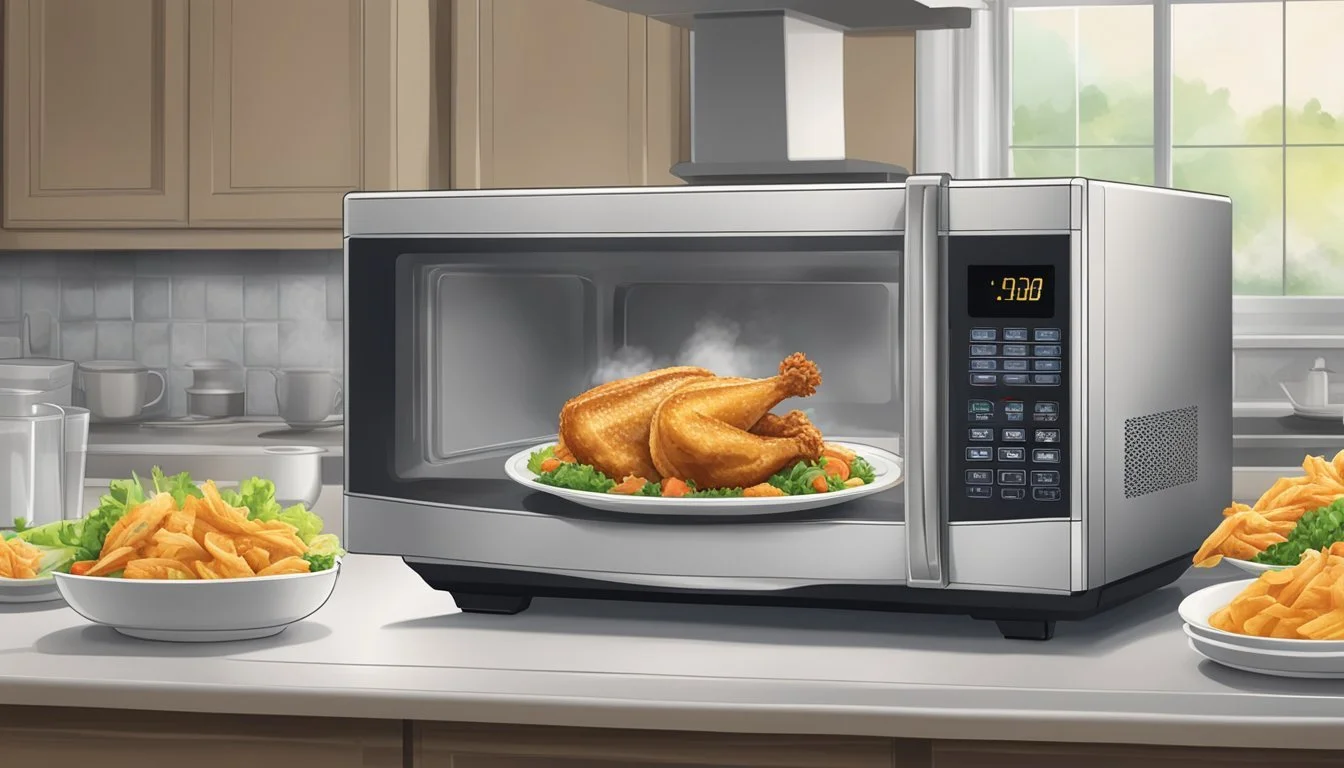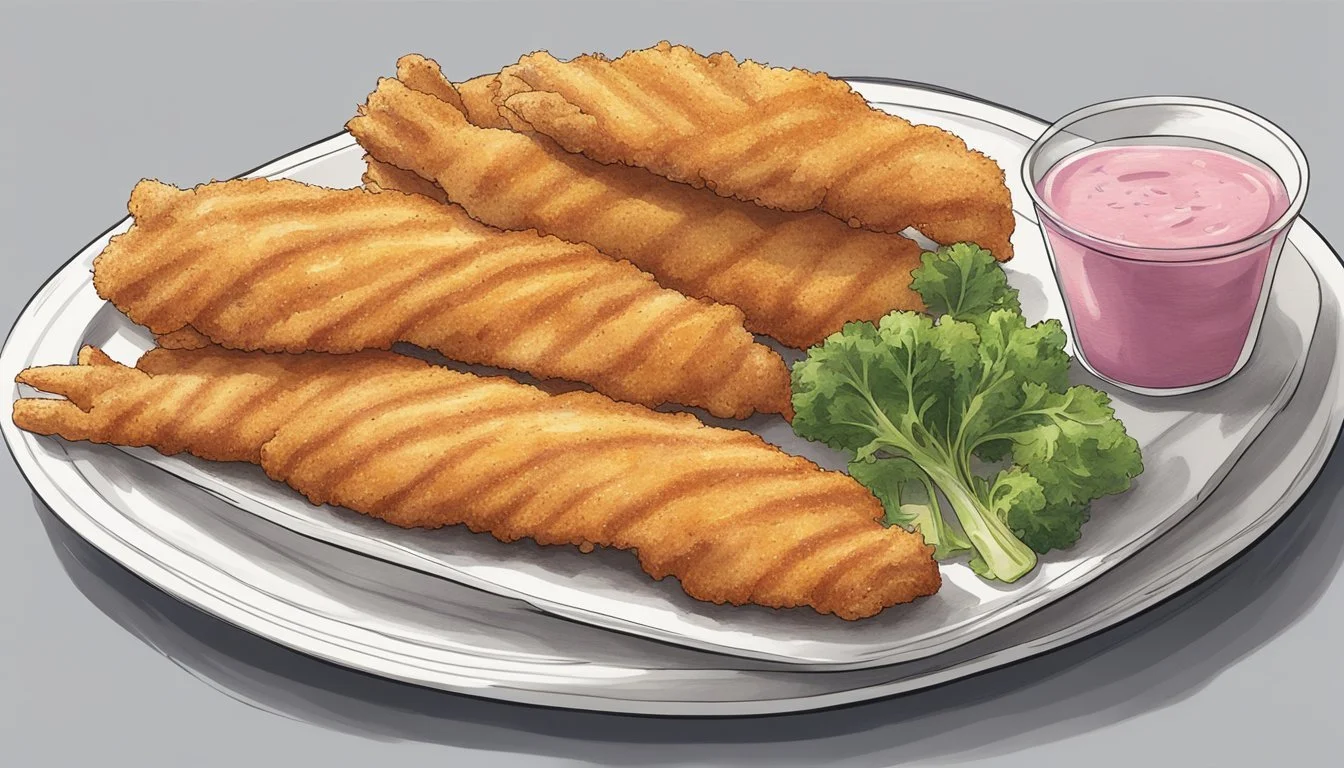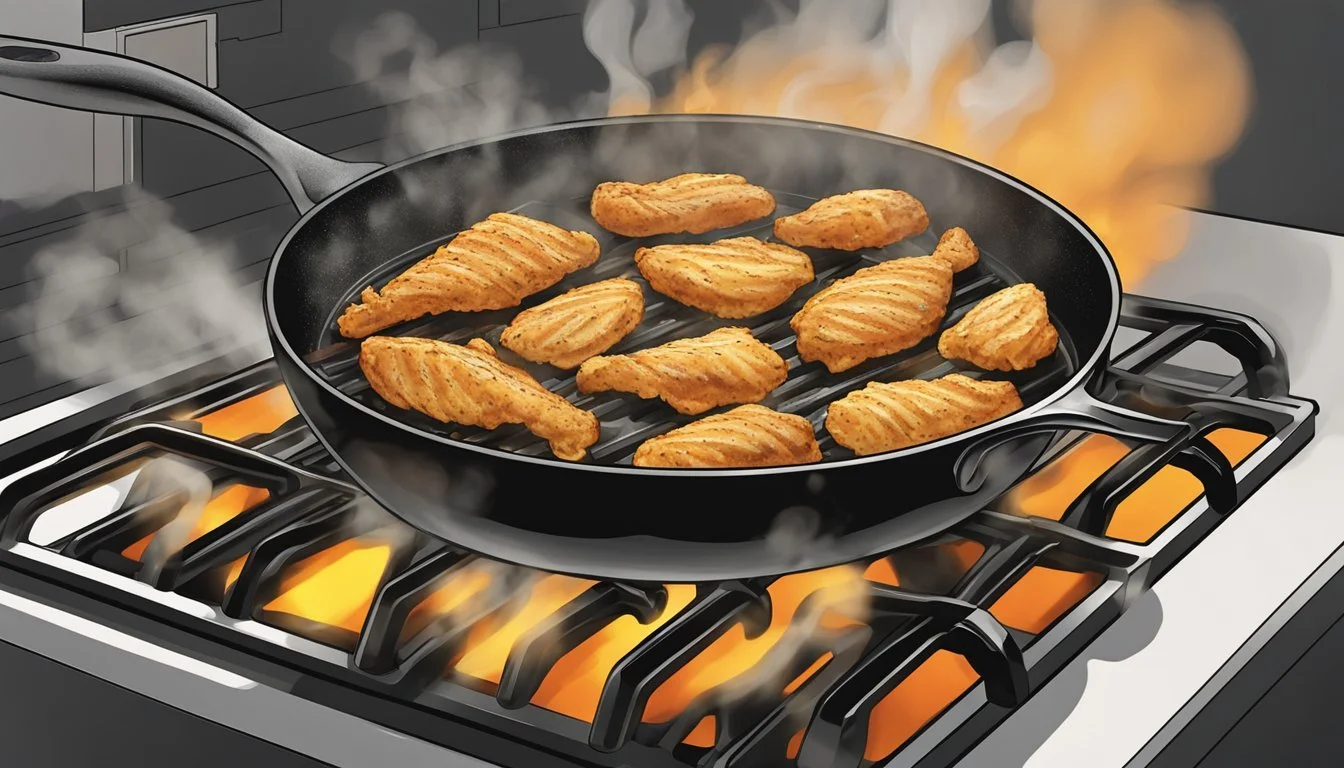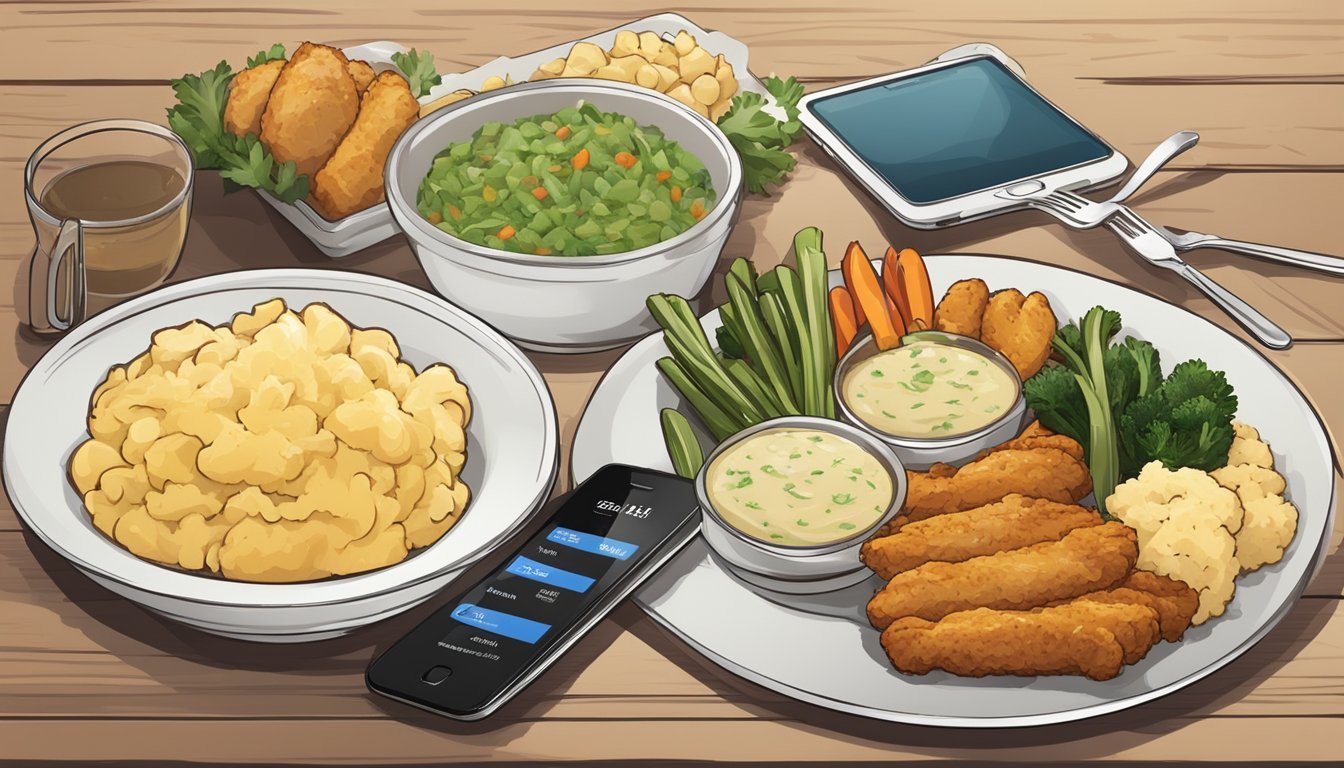How to Reheat Banquet Chicken Strips Meal
Simple Steps for Best Results
Reheating Banquet Chicken Strips can be an art to preserve their crispy texture and delicious flavor. To achieve the best results, preheat your oven to 400°F and layer the chicken strips on a baking sheet lined with aluminum foil. This method ensures even heating and maintains the quality and crunch of the chicken.
Another effective approach involves using a skillet. Preheat the skillet over medium heat, add a small amount of oil or butter, and place the chicken strips in the heated skillet. This technique helps reheat the chicken evenly and keeps them from drying out while adding a slight crispiness.
For those in a rush, reheating in a microwave is an option, though it can make the strips a bit soggy. Cover the chicken strips with a damp paper towel and microwave for short intervals to avoid overcooking. This helps to maintain some moisture, although it's less ideal for retaining crispiness.
Importance of Proper Reheating
Properly reheating Banquet Chicken Strips is critical for both safety and quality.
Achieving the correct internal temperature ensures that the meat reaches 165°F. This temperature is essential to eliminate bacteria that could lead to foodborne illnesses.
Bacteria such as Salmonella and Campylobacter can thrive in improperly heated chicken.
Using equipment like an oven, skillet, or air fryer helps maintain the right temperature.
It's vital to avoid underheating as it leaves dangerous pathogens intact.
By following these guidelines, the integrity and safety of the meal are preserved, giving a satisfactory experience.
Preparing Chicken Strips for Reheating
Proper preparation is crucial to ensuring that Banquet chicken strips retain their texture and flavor when reheated. The following steps include thawing frozen tenders safely, bringing them to room temperature, and taking precautions with leftovers.
Thawing Frozen Chicken Tenders
When dealing with frozen chicken tenders, it's important to thaw them correctly to avoid compromising food safety. Place the chicken tenders in the fridge to thaw slowly overnight. This method helps retain moisture and texture.
Another option is using the microwave. Use the defrost setting and check every 30 seconds until thawed. Avoid refreezing once thawed to maintain quality.
For quicker thawing, you can also place the tenders in a sealed, airtight container and submerge it in cold water. Change the water every 30 minutes.
Bringing Chicken to Room Temperature
Before reheating, allow the chicken strips to reach room temperature. This ensures even heating and avoids cold spots. Take the chicken strips out of the fridge and let sit for about 15 to 30 minutes.
Make sure they are not exposed to direct sunlight or other heat sources. Keep them covered with a clean cloth or in an airtight container to prevent contamination and drying.
Room-temperature chicken strips will reheat more evenly compared to those taken straight from the fridge.
Precautions with Leftover Chicken
Always store leftover chicken strips in an airtight container to maintain freshness and prevent drying out. Leftovers should be refrigerated promptly after being cooked.
Do not leave cooked chicken at room temperature for more than two hours. If reheating, ensure the chicken reaches an internal temperature of 165°F to kill any harmful bacteria.
Use leftovers within three to four days when stored in the fridge. If you plan to keep them longer, freezing is a safer option.
Reheating Chicken Strips in the Oven
To achieve crispy, evenly heated Banquet chicken strips, using an oven can be very effective. By preheating the oven, properly spacing the strips, and using foil, you ensure the chicken stays moist and delicious.
Preheat Oven
Preheat the oven to 375°F (190°C) to ensure it's hot enough to properly reheat the chicken strips. Preheating is crucial because it allows the chicken to start cooking immediately once it's placed in the oven. This helps maintain the texture and prevents the strips from becoming soggy. Always use an oven thermometer if you’re unsure about your oven’s accuracy, as temperature consistency greatly impacts the final result.
Using Foil and Baking Sheet
Line a baking sheet or baking dish with aluminum foil. This prevents sticking and makes for easier cleanup. Arrange the chicken strips in a single layer on the baking sheet, ensuring they do not touch or overlap. This even spacing allows heat to circulate properly around each piece, ensuring they heat evenly and become crispy. Covering the strips loosely with another sheet of foil can help retain moisture, especially if the chicken pieces are particularly large or thick.
Oven Reheating Time and Temperature
Once the oven has reached 375°F (190°C), place the baking sheet with the chicken strips inside. Bake for 12-15 minutes. Check the internal temperature with a meat thermometer to make sure it reaches 165°F (74°C). Keeping an eye on the chicken strips towards the end of the reheating cycle is important to avoid overcooking, which can make the chicken dry. For an extra crispy finish, remove the top layer of foil for the last few minutes of baking.
Using the Microwave for Moist Chicken
Proper arrangement, covering, and timing are key to ensuring your Banquet chicken strips are reheated to perfection in the microwave. These steps will help maintain moisture and avoid any sogginess.
Arrangement on Microwave-Safe Plate
Begin by placing the Banquet chicken strips on a microwave-safe plate. Ensure that they are evenly spaced and not stacked on top of each other. This allows for even heating. Overlapping or crowding the chicken strips can lead to uneven heating and potential sogginess.
Make sure to use a plate marked as microwave-safe to avoid any risk during heating. Proper placement on the plate helps retain the optimal moisture level and prevents one side from becoming too dry or too soggy.
Covering with Damp Paper Towels
Covering the chicken strips with damp paper towels is crucial for moisture retention. Lightly dampen the paper towels with water and place them over the chicken strips. This method helps trap steam, keeping the chicken moist throughout the reheating process.
Using damp paper towels also prevents the chicken from drying out. Be cautious not to soak the paper towels excessively, as too much moisture can lead to the chicken becoming too wet and losing its crispy texture.
Determining Microwave Time
Reheating time can vary depending on the microwave's wattage. Start by microwaving the chicken strips on medium power or around 50%. A good rule of thumb is to heat for approximately 2 minutes per pound of chicken. After the initial heating period, check the chicken's doneness and heat in 30-second intervals as needed.
Use a food thermometer if possible. Ensure the internal temperature reaches 165°F (74°C) for safe consumption. Adjusting the power level and time carefully prevents the chicken from becoming overcooked or too dry while helping to keep it moist and tender.
Stovetop Reheating for Crispness
Reheating Banquet Chicken Strips on the stovetop ensures a crispy texture and savory flavor. Follow these steps using the right pan and carefully selected oil or butter.
Pan Selection
A heavy-bottomed skillet works best for reheating chicken strips. Cast iron, stainless steel, or nonstick pans are all good choices.
Heavy-bottomed pans distribute heat evenly, preventing hot spots and ensuring that the chicken reheats uniformly. Smaller pans work well for a meal-sized portion, while larger pans can handle multiple servings at once.
Nonstick advantages:
Easy cleanup
Prevents sticking
Remember to preheat the pan before adding the chicken strips to help maintain their crispiness.
Oil or Butter for Frying
Selecting the right cooking fat is crucial. Neutral oils like canola, vegetable, or grapeseed oil have high smoke points, ideal for frying chicken strips without burning.
Butter adds flavor, but it has a lower smoke point, so use clarified butter or mix it with oil for better results.
Using a small amount of fat prevents the strips from becoming greasy. About 1-2 tablespoons should be enough for a standard skillet.
Stovetop Reheating Method
Preheat the skillet over medium heat.
Add 1-2 tablespoons of oil or butter to the hot pan.
Arrange the chicken strips in a single layer, ensuring none overlap.
Cook for 1-2 minutes per side, flipping midway to heat evenly.
Monitor closely to avoid overcooking. The goal is to heat through to 165°F while maintaining a crispy outside.
Alternative Reheating Methods
Reheating Banquet Chicken Strips Meals can be done efficiently while maintaining their crispiness and juiciness. The two methods discussed below ensure even heating and preserve the quality of the meal.
Using an Air Fryer
An air fryer is great for reheating chicken strips, as it helps maintain their crispy exterior. Start by preheating the air fryer to 375°F.
Place the chicken strips in a single layer in the fryer basket to ensure even heat distribution. Depending on the model and size of your air fryer, reheat the strips for about 4-6 minutes, checking halfway through.
If you notice any uneven heating, you can shake the basket gently or flip the strips to allow consistent crispiness. Using an air fryer results in juicy yet crisp chicken, making it an ideal method for reheating.
Reheating with a Toaster Oven
Reheating Banquet Chicken Strips Meal with a toaster oven is another effective method. Begin by preheating the toaster oven to 400°F.
Place a layer of aluminum foil on a baking sheet and arrange the chicken strips in a single layer, ensuring they are not overcrowded. Reheat for 10-12 minutes to achieve even warmth and crispiness. For best results, you can flip the strips halfway through the reheating process.
A toaster oven offers more control over temperature, ensuring the chicken strips remain juicy inside and crisp outside without overcooking.
Ensuring Food Safety
When reheating Banquet Chicken Strips Meal, food safety is paramount. Ensuring poultry is thoroughly heated is essential to avoid any risk of foodborne illness.
Use a Meat Thermometer
A meat thermometer is the best tool for checking the internal temperature. Insert the thermometer into the thickest part of the chicken strips.
Target Temperature: 165°F (74°C)
To ensure safety, the chicken must reach an internal temperature of at least 165°F (74°C).
Even Heating
For even heating, place the chicken strips in a single layer on the baking tray. This helps all pieces to heat up uniformly.
Caution: Avoid Overheating
While it's essential to heat thoroughly, avoiding overheating is equally important. Overheating can lead to dry, tough meat.
Storage Tips
Store leftovers in a refrigerator and only reheat once to maintain safety and quality.
Enhancing Flavor and Texture after Reheating
Enhancing the flavor and texture of reheated Banquet chicken strips can keep them from becoming soggy or chewy. Using broth and seasoning or applying sauce can significantly improve their taste and mouthfeel.
Using Broth and Seasoning
Adding a bit of broth or water can help maintain moisture and enhance flavor.
Before reheating, lightly sprinkle chicken broth over the strips to prevent them from drying out.
Seasoning is also crucial. Adding a pinch of salt, pepper, or garlic powder can bring out the flavor.
Important: Avoid over-saturating the strips, which can make the breading soggy. Stirring the strips occasionally during reheating ensures even distribution of moisture and seasoning.
Applying Sauce or Dipping Sauce
Using sauces can transform the texture and flavor of reheated chicken strips.
Apply a light coating of barbecue, buffalo, or honey mustard sauce before or after reheating to keep the breading from becoming too chewy.
Serve immediately with a dipping sauce like ranch or blue cheese to enhance taste and texture.
Thin sauces can prevent sogginess, while thicker sauces can add a crispy layer if applied sparingly.
Guidelines for Storing Cooked Chicken
Proper storage of cooked chicken ensures its quality and safety. Key factors include the temperature of the refrigerator and the use of airtight containers or appropriate wrapping methods.
Refrigerator Storage Tips
Cooked chicken should be stored in the refrigerator within two hours of cooking. The refrigerator temperature should be set to 40°F (4°C) or below to slow bacterial growth. It's critical to place the chicken in the coldest part of the fridge.
Organizing the fridge helps with airflow and maintaining a consistent temperature. Store the chicken on a middle shelf, not in the door, as the temperature fluctuates more in the door. Label the container with the date to keep track of how long the chicken has been stored, typically up to 3-4 days.
Airtight Containers and Wrapping
Using airtight containers helps retain the moisture and prevent unwanted odors from affecting the cooked chicken. Glass or BPA-free plastic containers work well.
If airtight containers are not available, use heavy-duty aluminum foil or plastic wrap to tightly wrap the chicken. This prevents air exposure and keeps the chicken fresh. For extra protection, consider placing the wrapped chicken in a resealable plastic bag.
If freezing the cooked chicken, use freezer-safe containers or heavy-duty freezer bags. Label with the storage date, and the chicken can be kept for up to four months in the freezer without significant loss of flavor or texture. Proper airtight wrapping is crucial to avoid freezer burn.
Tips for Best Results
To achieve the best results when reheating Banquet Chicken Strips Meal, a few practical tips can make a significant difference.
Preheat the Oven: Always start by preheating your oven to 375°F. This ensures even cooking and helps maintain the crispy texture of the chicken strips.
Use an Oven-Safe Tray: Place the chicken strips on an oven-safe tray. For better results, use a wire rack on top of the tray to allow heat circulation.
Avoid Overcrowding: Ensure that the chicken strips are placed in a single layer without touching each other. This helps in promoting even reheating.
Timing: Reheat the chicken strips for about 15-20 minutes, checking them halfway through. Adjust the cooking time if necessary, but don't overheat to avoid drying out the meat.
Monitor the Temperature: Use a meat thermometer to ensure the internal temperature of the chicken reaches 165°F for safe consumption.
Patience: Wait a few minutes after reheating before serving. This allows the juices to redistribute, enhancing the taste.
Cover with Foil: To prevent burning, loosely cover the chicken strips with aluminum foil initially. Remove the foil during the last 5 minutes to crisp them up.
Avoid Microwave for Crispy Texture: Avoid reheating in the microwave if you prefer a crispy texture. The microwave tends to make the chicken strips soggy.
Add Some Moisture: If the chicken strips appear dry, sprinkle a little water or chicken broth before reheating. This will help in retaining moisture.
Check Frequently: Keep an eye on the chicken strips to prevent burning. It's vital to monitor frequently, especially towards the end of the reheating process.
Serving Suggestions
For a balanced meal, think about pairing your Banquet Chicken Strips with a fresh salad. Mixed greens, cherry tomatoes, and a light vinaigrette can complement the crispy texture of the chicken strips.
Chicken Breast: If you enjoy chicken breast, consider adding sliced, reheated breast portions alongside your chicken strips. This provides variety and adds more protein to your meal.
If you have a frying pan, you can quickly sauté some vegetables. Bell peppers, onions, and zucchini make excellent sides.
Create a mini-feast by adding mashed potatoes or macaroni and cheese. These comforting dishes pair well with chicken strips and enhance your dining experience.
For a different twist, serve the reheated chicken strips with dipping sauces. Popular choices include ranch, honey mustard, or barbecue sauce.
Feel free to add a slice of garlic bread or a small side of coleslaw to round out the meal.
Lastly, a simple fruit salad can bring a refreshing finish to your meal, offering balance and a touch of sweetness.
Sharing Your Succulent Meal on Social Media
Capture your reheated Banquet Chicken Strips Meal with good lighting. Natural light works best.
Snap a few close-ups to highlight the crispy texture and juicy interior.
Enhance your photo with editing tools to balance brightness and contrast.
Share the photo directly to your feed. Write a brief caption mentioning the deliciousness of the meal.
Tag Banquet and use relevant hashtags, like #BanquetMeal, to reach a wider audience.
Post the photo with a short, catchy description. Highlight the ease of reheating.
Include hashtags like #QuickMeals and #ChickenStrips. Tag friends who may enjoy the meal.
Create a new pin with your photo. Use keywords in the pin description.
Add it to a board about easy meal ideas. This will attract others looking for convenient meal solutions.
Using these simple tips can help your reheated Banquet Chicken Strips Meal look as good as it tastes on any social media platform.











